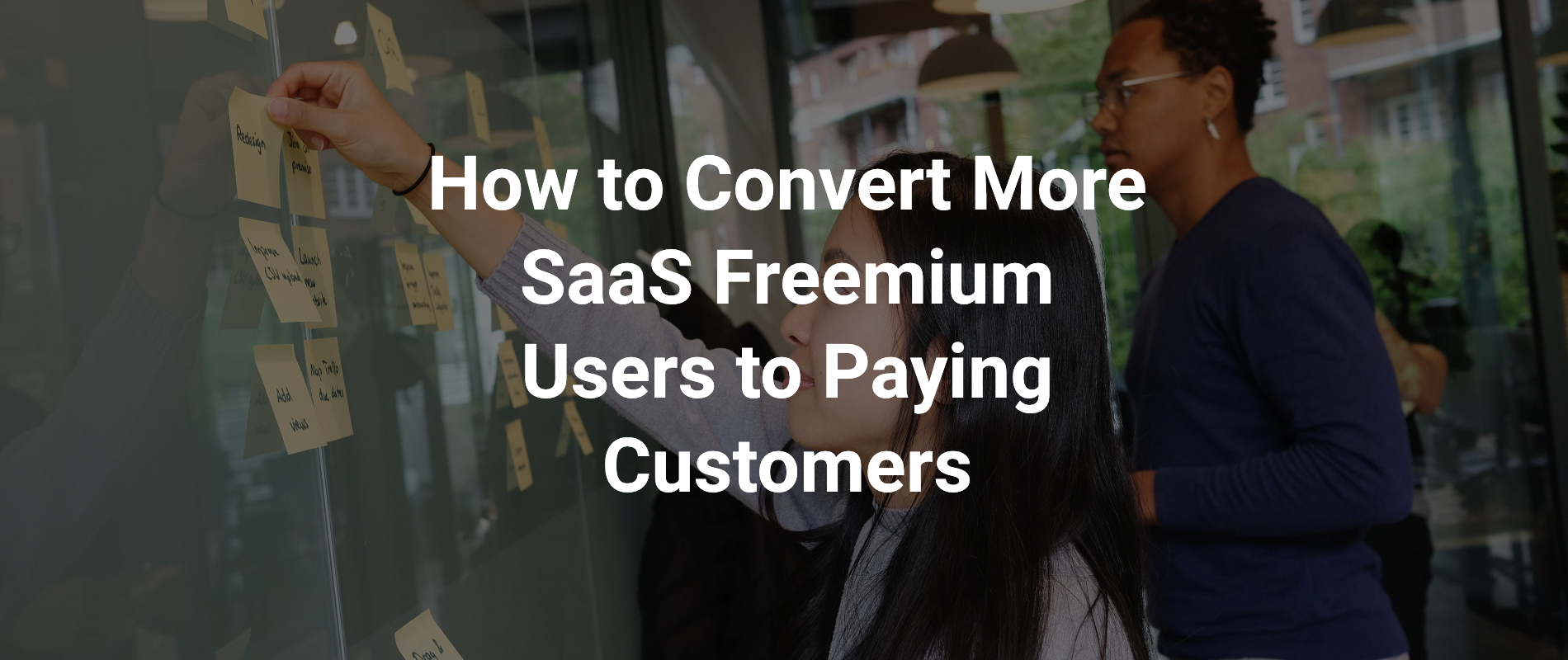“Freemium” is still a go-to business model for SaaS companies that want to build relationships with customers, with the goal of eventually offering add-ons, enhanced storage or advanced features at an extra cost.
With a freemium model (as opposed to a free trial, which provides a product or service to prospects at no charge for a limited time), the free plan potentially lasts forever, and users can either choose to upgrade to get access to paid features or stay with the free plan.
The great thing about this model is the mutual benefit. Customers get a product for free (with a limited feature set), and companies boost brand awareness and acquire a large set of initial users willing to try out a new app or service (gathering usage data, collecting user information and potentially showing ads to bring in revenue).
While there are many advantages to having a large base of free users, you also need to convert as many free users to paid ones as possible. So what are the best tactics to ensure a healthy SaaS freemium conversion rate? Let’s look at a 4-step process for converting more free users into loyal paying customers.
What Conversion Rate Should I Aim For?
Wondering what freemium-to-paid conversion rate you should be shooting for in your organization? The data experts at Databox have compiled helpful research that lets you know what to expect.
According to the Databox data, companies targeting small businesses can expect an average conversion rate of 6-10%. For companies targeting medium-sized businesses, the average conversion rate is a little lower, at 3-5%.
The 4-Step Process for Converting SaaS Freemium Users — Like a Human
Leading SaaS companies use a nurture-based strategy for converting freemium users to customers. Here are some best practices for making this strategy work for your company.
1. Create an enticing value proposition
The foundation of a successful conversion strategy is to offer a highly useful solution or platform that users love.
If you’re unsure of your value proposition, research the most popular and enticing benefits of your product or service. Talk to your early adopters and other customers and ask them:
- What do you like most about the product?
- What are its most valuable features?
- What do you find immediately beneficial?
- Which parts of the solution elevate it to the next level?
- What features make this solution stand out from the competition?
Understanding customers’ answers to these questions will help you present a value proposition that makes it attractive for users to upgrade.
For example, Canva offers an easy-to-use design tool to help users create graphics for social media and other content. Users can access many features and templates for free, including stock images and fonts. However, you can’t use all the available features unless you upgrade to Canva Pro, their paid subscription, which includes extra stock photos, animation, video, resizing features and robust branding tools.
2. Use nurturing email autoresponders
Many enterprise users sign up for freemium solutions, then forget they’ve signed up and neglect to use the tools. These users are less likely to upgrade to paid subscriptions because they’re unaware of the solution’s best features.
Stay top of mind with your free users by using thoughtful email automation. Send automated emails with tips for getting the most out of your product, step by step, and reminding them of your solution’s useful free and paid features.
You can also segment your audience and send personalized, automated content based on demographics, behavior or interests. For instance, you can personalize your function recommendations, share community-building experiences, or customize content based on specific ways your users use the platform.
3. Educate users
Successful SaaS platforms do an extraordinary job of educating users about how to use their platform — while at the same time, educating users about how to solve the problems they came to the platform to solve.
Send your free customers how-to content like videos or articles, or offer demos, free webinars or training sessions that highlight relevant features and unlock new ways of using your solution.
The marketing automation platform HubSpot is a good example of this. At HubSpot Academy, HubSpot’s learning platform, users can elevate their business and inbound marketing skills. During their training, HubSpot even suggests free versions of other companies’ automation tools that may be helpful to users. When cobbling together an inbound marketing strategy from disparate free solutions becomes too cumbersome, HubSpot offers a paid upgrade that lets users manage everything quickly and easily with one platform.
4. Track behavior and score leads
Using the analytics you gather from freemium users, you can examine user behavior to get a clear sense of who might be most interested in signing up for the premium version of your software.
Automatically score each free user with a numerical value to indicate their interest level. Assign points based on your company’s most valuable perceived behaviors, like regular use of the free version, visiting your pricing page, reading a case study or requesting a demo of the paid product.
Customize your follow-up to different groups of prospects, based on this lead scoring.
Nurture Your Leads to Transform Them Into Paying Customers
Giving away free access to your solution doesn’t automatically mean your users will end up paying for premium features. You still need an effective freemium-to-paid conversion strategy if you are going to be successful with this model.
Putting this 4-step process in place will help your company nurture free users and turn them into paying customers so you can scale your SaaS business.
Connect with Jessica Mehring on LinkedIn to find out more about how you can use content to nurture your freemium users and convert them to paying customers.
